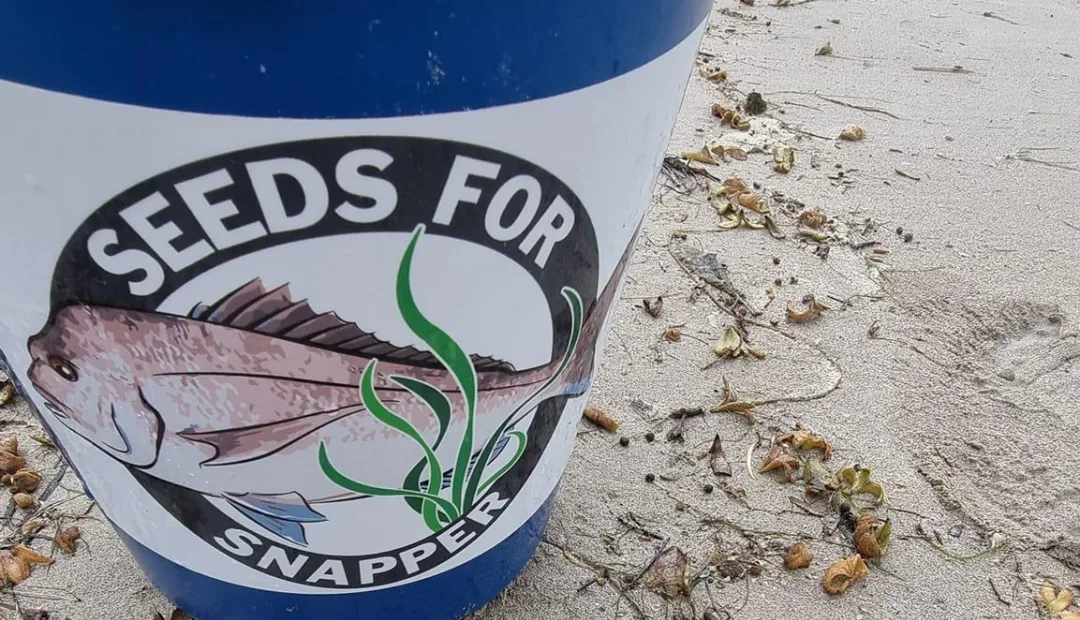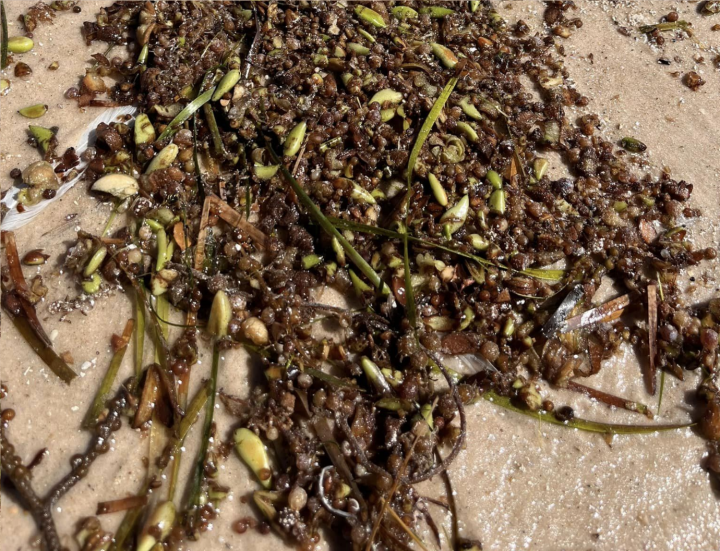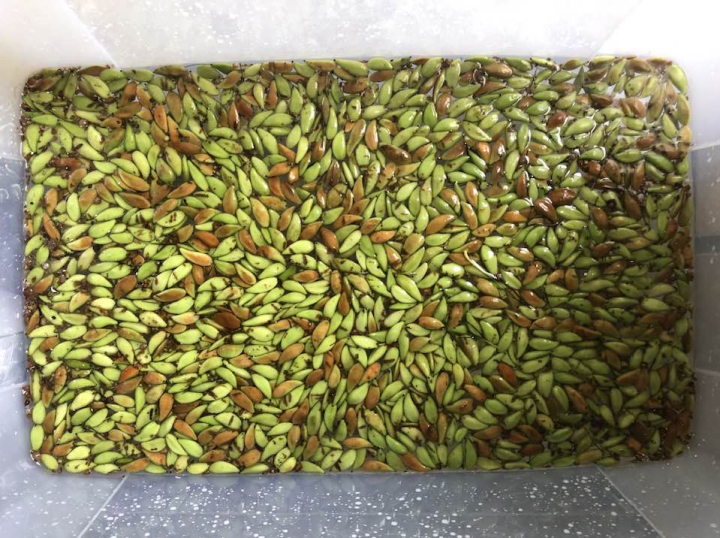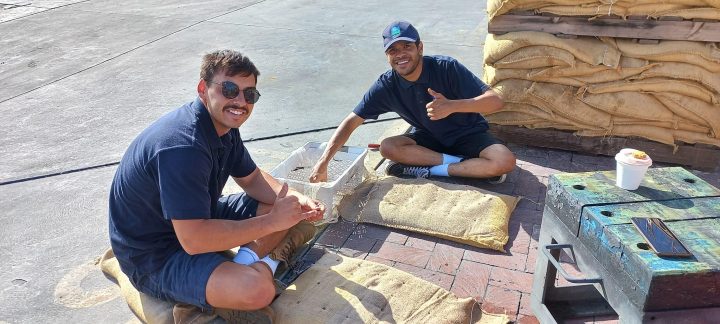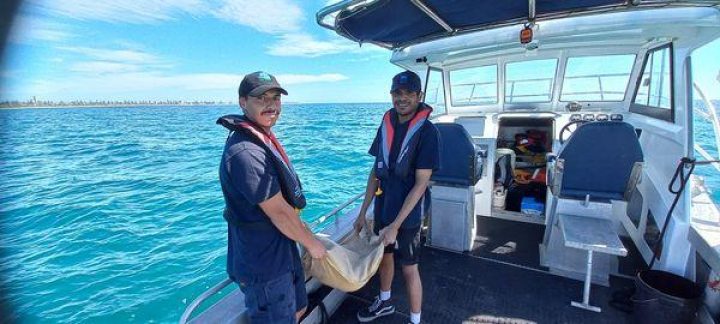Published:
Author:
Seeds for Snapper is a national volunteer program that encourages community members to contribute to seagrass restoration including collecting, processing and deploying seagrass seeds into rehabilitation sites chosen in collaboration with scientists.
To date:
Over 8,000 volunteer hours
Over 40,000 seagrass fruit collected and processed
18,000 sand bags seeded and deployed
Date collection on germination and seed release times for Posidonia seagrass
Engagement of local community beachcombers and boaters in the project (workshops, collection, sand bag seeding and release)
Greater understanding and awareness within the community of the role and value of seagrass meadows.
Greater understanding of land-based activities that can impact seagrass health
Successful germination and establishment of seagrass from sand bags released.
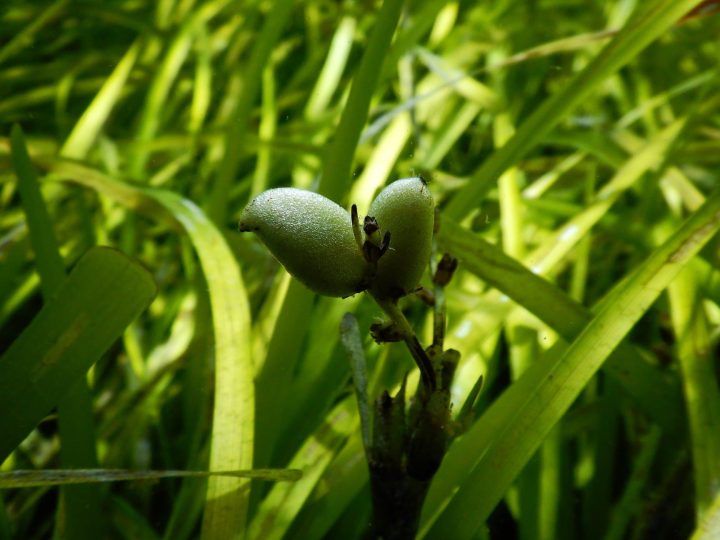
Importance of seagrass
Over 6,000 hectares of seagrass has been lost from the Adelaide coastline. This is a major issue for coastal protection, fisheries productivity and biodiversity. Restoration of seagrass and marine communities has also been identified as a priority issue for the community in social surveys. By addressing seagrass loss, we are addressing a significant risk for further decline of our aquatic species, impacts to our coastal ecosystems, and the industries that depend upon them.
Per hectare, seagrasses can store up to twice as much carbon than terrestrial forests and play an important role in reducing global greenhouse gas emissions. Seagrass meadows provide important nursery ground for snapper, calamari, whiting and blue swimmer crab. Seagrass meadows also help stabilise the seabed by holding sand with their roots, and reducing wave action and currents near the seabed with their leaves. However, seagrass meadows are naturally slow spreaders and struggle in sandy habitats, so once the seagrass meadows are los,t it takes time for the plants to repopulate.
Restoration of seagrass is critical for improving the health and function of marine ecosystems and sustaining coastal communities and industries that depend on them. Restoring seagrass will directly and indirectly help to mitigate the effects of climate change by rebuilding carbon stocks, stabilising sand and protecting coastal communities at threat from erosion. It will provide much needed support on fisheries and biodiversity as seagrass meadows are essential spawning site for many ocean and estuary species.
Seagrass restoration has been identified as a promising way of improving the health of our aquatic ecosystems, sequestering carbon to mitigate climate change, and increasing fish diversity and abundance (Blandon & Zu Ermgassen 2014, Marbà et al 2015, Oreska et al 2020). Restoration of seagrass is critical for improving the health and function of these ecosystems and sustaining coastal communities and industries that depend on them.
The Seeds for Snapper Program
In November 2023, OzFish Unlimited embarked on its 4th year of the Seeds for Snapper program. The aim of this program is to engage the community in seagrass restoration activities that help restore loss seagrass assemblages in the Gulf St Vincent.
This program had previously been carried out in 2020–21 2021–22 and 22–23, where a combined total of 1,300 sandbags containing 40,000 seagrass seeds were processed and deployed with the contribution of more than 8,000 volunteer hours.
Year 4 of this program saw the continuation of the previous programs, with a further 15,000 seeds being processed and sown into 500 sandbags which were then deployed in priority sites in Gulf St Vincent to increase the area by approximately 0.5 ha. This brings the total area covered by sandbags over 4 years to 1.8 ha.
Posidonia seeds were collected from metropolitan beaches within Gulf St Vincent, processed, and planted using techniques designed for the community and supported by science.
The project has been informed by South Australian Research and Development Institute (SARDI) through 20 years of seagrass rehabilitation research
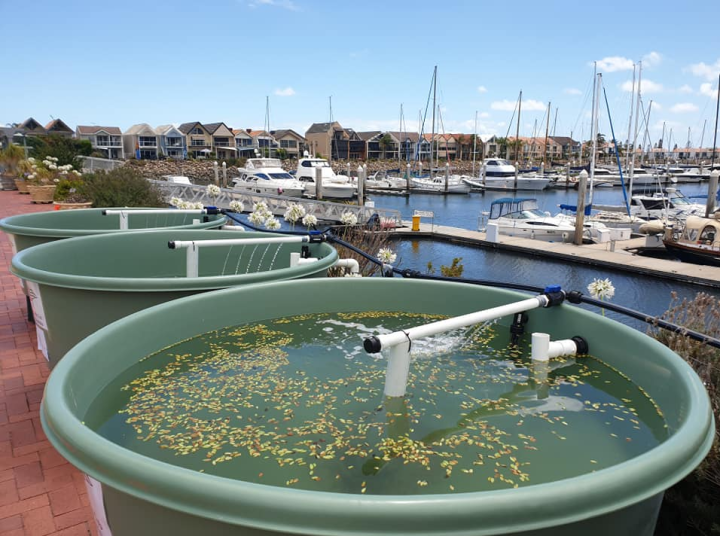
Outcomes from the program
A previous partnership between OzFish Unlimited, Green Adelaide and community members tested the biological success of using volunteers to collect seagrass fruit for processing onshore, before dispersing seed back into the ocean for it to establish into seagrass meadows. As a result of the lessons learnt from this prior project, the Adelaide Seeds for Snapper Program embarked on its 4th year. The project was again designed with community participation in mind, where volunteers contribute to all areas of the project including fruit collection, processing, delivery to the seafloor and monitoring. Further to this, the project increased community understanding and awareness of the ecological importance of seagrass.
Volunteers are supported to collect Posidonia seagrass fruits so they can be sewn into environmentally friendly biodegradable sandbags, then placed back in the ocean, at the correct depth, at identified locations. The aim is to help establish seagrass meadows along the metropolitan coastline.
The project was widely supported by the community, local government and businesses who contributed in-kind to the project. In 2022–23 over 500 volunteers participated in project activities contributing more than 2,368 hours to collect and return 15,000 seagrass seeds to project sites.
Who is involved
OzFish has promoted project outcomes widely in mainstream and social media, and continues to provide regular updates and attend public events to communicate project successes.
Funders
- Green Adelaide
- BCF
Major supporters
- Environment Protection Authority (EPA) – technical advice
- Department for Environment and Heritage – technical advice
- South Australian Research and Development Institute (SARDI) – technical advice
- RecFish SA – project communications
- Aquatic Biosecurity – technical advice, in-kind labour
- Cruising Yacht Club of South Australia – site access, location for seed processing facilities
Further reading
- Seeds for Snapper Program – Ozfish
- Seeds For Snapper SA Volunteers (Adelaide & Fleurieu Peninsula) Facebook – Source of photos for this case study
- Seagrass restoration scales up in South Australia thanks to volunteers – Ozfish
- Australia's biggest seagrass restoration project is happening in South Australia – DEW
Video Source: Miguel Sierra - Facebook Seeds For Snapper SA Volunteers, Adelaide & Fleurieu Peninsula
